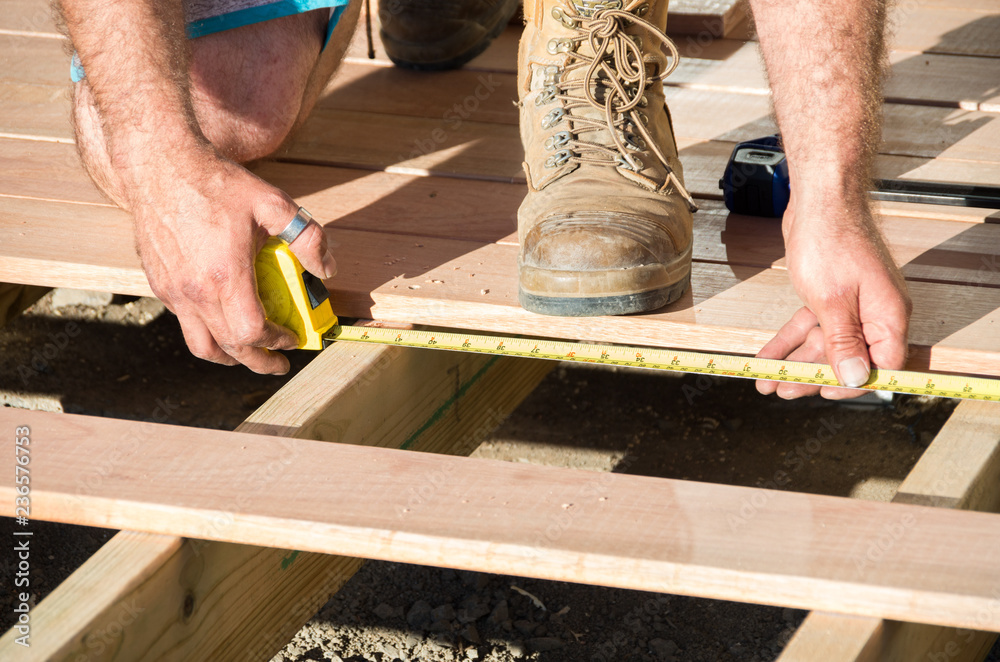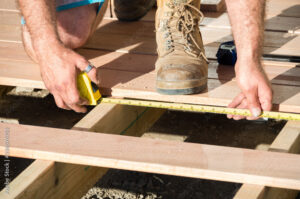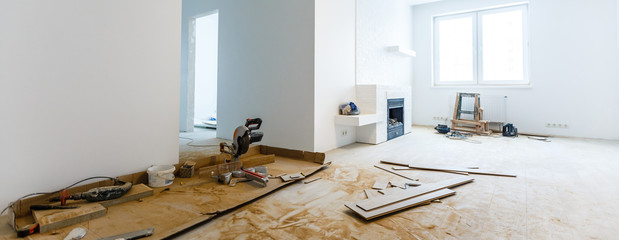Flooring Fairfield NJ is a big investment that can add resale value to your home. Steer tax refunds, garage sales, or whatever extra cash you come across toward your flooring goal.
Carpet offers thermal and sound insulating benefits, and it’s soft texture visually warms up spaces. It also doesn’t retain mold, mildew, or other allergens.
Hardwood floors offer a timeless, luxurious look and are a natural insulator. They’re also warm underfoot and compatible with radiant heating systems. The downsides of hardwood are that it’s more expensive than other flooring options, and it can be susceptible to moisture and warping if not properly maintained. Adding a cork or foam underlayment can help mitigate these issues.
Hardwood comes in a wide variety of species, cuts, and styles. It’s important to consider the design vision of your home, as well as your lifestyle, before selecting a wood floor. Hardwood species differ in thickness and hardness, with harder woods such as oak, maple, and hickory offering greater durability. Softer woods such as birch, cherry, and walnut are more sensitive to wear and tear.
Grain patterns play a big role in the appearance of wood floors, with different cutting techniques creating unique designs. Plain-sawn boards feature growth ring patterns that appear parallel to the board, while rift and quartersawn boards create a wavy or flamelike pattern. Wood grain can be further enhanced by a variety of finish types, including hand-scraped, distressed, and antiqued. Grading levels can also make a big difference in color, with clear grades having very little knots and character marks for a smoother style and higher-graded woods carrying lots of knots for a rustic or farmhouse look.
Solid wood floors consist of solid planks milled into flooring pieces that fit together with a tongue-and-groove system. They’re nailed to a wooden subfloor, but can be sanded down and refinished several times over the course of their life, making them the longest-lasting hardwood option. They can be nailed directly to concrete, but this method is not recommended and may require special preparation before installation.
Solid wood can be installed in a variety of widths, with wider planks (up to 12”) often used in traditional and colonial homes, while narrower planks (up to 3”) are more commonly seen in contemporary or modern homes. Hardwood floorboards can have a square edge, which offers a sleek surface without gaps between boards, or they can have a beveled edge for a more rustic look. They can also have a microplaned beveled edge for better hiding of uneven boards.
Ceramic Tile
Ceramic tiles are a popular flooring choice because they are durable, affordable, and come in a wide variety of styles and colors. They are made of clays and other natural products, then fired in a kiln. They can be glazed or unglazed, though most homeowners choose glazed tiles. The glaze seals the tile, making it water-resistant and stain-resistant. It also makes it easier to clean and maintain. This makes it a great choice for areas prone to moisture, like bathrooms and kitchens.
Unglazed ceramic tiles are not as durable and can be chipped or scratched quite easily. However, if you want to use them in areas that are not prone to moisture, they can be sealed with an acrylic top coat. This will make them much more resistant to scratches and stains, but you will need to have it reapplied periodically.
Both glazed and unglazed ceramic tiles are very versatile and work well in a variety of settings. They are available in a range of sizes and can be used on floors, walls, and backsplashes. They are a great option for people who suffer from allergies because they don’t harbor allergens like carpet does. However, they are not suitable for very high traffic areas, as they will not withstand the impact of heavy shoes.
Ceramic tile can be glazed with a variety of designs and colors to create different effects, such as glossy or matte finishes. They can also be arranged in a pattern or with trim pieces and borders to create unique effects. They are also a great choice for accent pieces, such as shower walls and accent strips in bathrooms.
Nonporous ceramics are a great choice for floors, backsplashes, and countertops in kitchens, bathrooms, and foyers. They can also be used in mudrooms and entryways because they are easy to keep clean and are a great barrier against sand and dirt. However, they are not suitable for outdoor spaces because they can absorb and retain moisture, which leads to deterioration.
Porcelain is similar to ceramic, but it is much denser and harder and won’t chip as easily. It is often used in bathroom wall and floor applications, but it can also be used as a countertop or in showers. It is also a good choice for kitchens and living rooms because it resists heat and is easy to clean. It doesn’t emit toxic fumes, like some vinyl flooring, and doesn’t contain any harmful VOCs or phthalates, which can be found in some wood products.
Laminate
One of the first man-made alternatives to solid wood flooring, laminate has evolved over time to offer not only a wide variety of appearances, but also a range of quality levels. Unlike early versions of this product, which looked more plastic than real hardwood, today’s high-end laminate flooring has the look and feel of natural materials like wood, stone or tile, but at a fraction of the cost.
Laminate is a multi-layer flooring system that is fused together under extreme heat and pressure, creating a tough, durable floor that is easy to install. It has a back layer that protects the core board from moisture and guarantees dimensional stability, while the top layers are designed for long-term performance and beauty.
The decorative layers (B) are printed to allow for a wide variety of designs, from high-resolution photographic images to realistic reproductions of hardwoods, stone or tile. You can even choose to have your laminate floors patterned with different finishes, such as herringbone or chevron patterns, to add visual interest to a room.
The core board is made of high-density fiberboard, typically containing more than 80% wood, to provide exceptional structure strength and resistance. It is milled with micron-precise tolerances, allowing the laminate planks to fit together to create a strong and stable floor that can be installed in areas that are subject to moisture, such as bathrooms and kitchens.
A melamine wear layer provides a hard surface that resists scratches and can be refinished in most cases. Most laminate products also have an attached underlayment layer to promote moisture-resistance or add sound attenuation, depending on the specific product.
Laminate is a good choice for DIYers, who can choose to do their own installation using a simple glue-down method or pre-glued panels. For a more professional look, however, laminate should be installed by a professional, as it requires special tools and equipment to ensure the proper installation and bonding of the layers.
While it is an excellent and affordable alternative to solid hardwood, be aware that if you damage your laminate, it cannot be sanded or refinished to restore its look. This is why it’s important to maintain your laminate by following a maintenance schedule, and using only non-toxic cleaning products.
Stone
Stone flooring has been used since the beginning of time and is a beautiful option for those who want to add a rich, luxurious look to their home. This type of floor has many benefits and can increase the value of your home. However, this material is not for everyone and it is important to consider all of the pros and cons of using stone in your home.
Most natural stone tiles are porous and require a sealer to keep them stain free. This is especially true for slate and sandstone which have traces of iron that can oxidize and create dark spots on the surface of the tile. This problem is not as common with limestone.
Non-vitreous stones are very absorbent and should not be used in a damp environment. They are prone to staining from dirt, acid rain and will crack when absorbed materials freeze and expand. Vitreous stones have a moderate rate of water absorption and are suitable for most applications. Impervious stones are very durable and will hold up well in high traffic areas.
With a variety of shades and textures, marble is a popular choice for homeowners who want to create a classic, sophisticated look in their homes. This natural material is scratch-resistant, antimicrobial and available in a wide range of colors.
Another popular choice for stone flooring is travertine. This dense, banded stone is typically available in a range of warm beige to toasty brown hues and can create a cozy, rustic feel in a room. Travertine is also naturally stain-resistant and has a low coefficient of friction making it a safe choice for households with children and pets.
As with all types of flooring, care and maintenance are essential for extending the lifespan of your stone floors. Regular dust mopping with a non-treated dry dust mop and occasional washing with neutral cleaners will help prevent dirt, stains, and mold growth. Be sure to avoid the use of harsh chemicals as they can be damaging to stone flooring. Also, be aware that the hard nature of stone flooring may not be comfortable on your feet or back if you are used to walking on soft surfaces.




 Building A Plan
Building A Plan